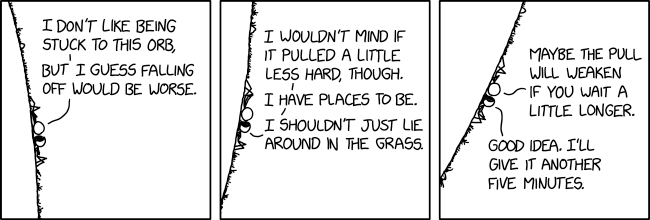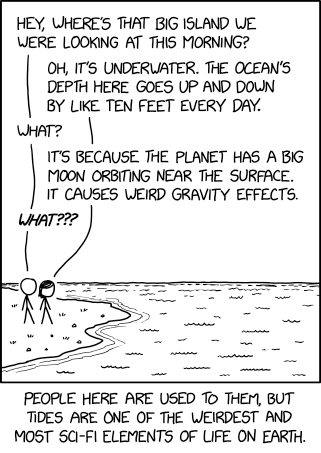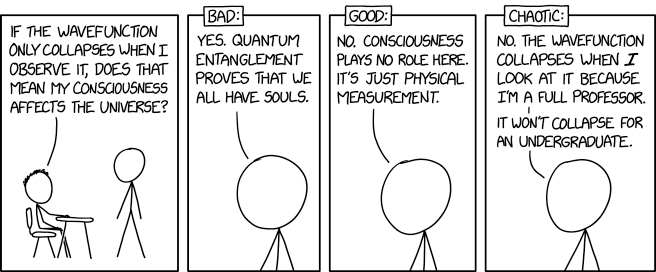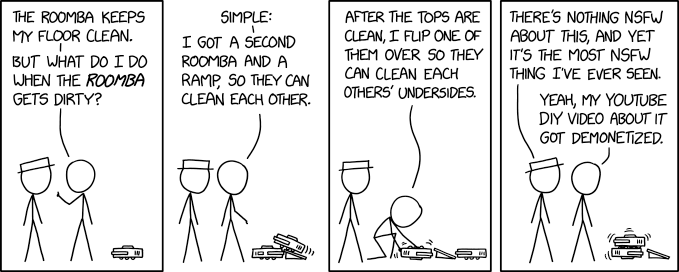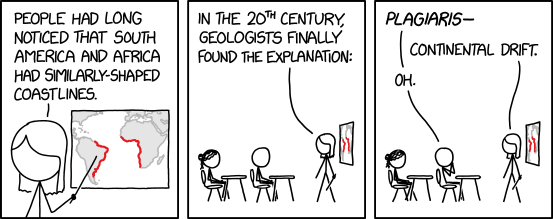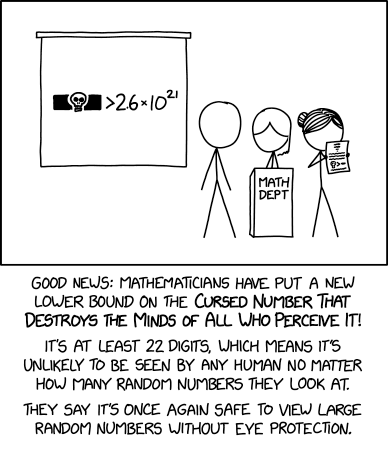


On a world map in the Mercator projection, Russia appears larger than Africa. In fact, Africa (11.7 million sq mi, 30.4 million km2) is nearly twice as large as Russia (6.6 million sq mi, 17.1 million km2). Africa has finally had enough.
“(Mercator) is the world’s longest misinformation and disinformation campaign, and it just simply has to stop,” Moky Makura, executive director of advocacy group Africa No Filter, told Reuters. The group champions the introduction of the Equal Earth projection, which aims to give Africa its magnitudinal due.
Cartographical marginalization
The African Union (AU) — the association bringing together all of Africa’s 55 countries — has joined Correct the Map, a campaign that urges national governments and international organizations such as the UN or the World Bank to replace Mercator with Equal Earth.

According to AU Commission deputy chair Selma Malika Haddadi, the Mercator projection misrepresents Africa as “marginal,” while it is in fact the world’s second-largest continent in both area (after Asia but ahead of North America) and population (after Asia but ahead of Europe).
That marginalization has real-life consequences, Correct the Map argues. Africa’s smaller-than-actual cartographic footprint in the Mercator projection contributes to the global lack of attention for Africa. Some campaigners go even further, claiming not only that Mercator negatively affects how the world sees Africa, but also how Africans see themselves. The cartographically diminished size of their continent affects their identity and pride, they say.
Introducing the Equal Earth projection as the standard map across all of Africa’s classrooms is their solution to “reclaim Africa’s rightful place on the global stage.”
“Maps are not neutral,” Fara Ndiaye, the co-founder of Speak Up Africa, told The Washington Post. “They were never meant to be. They shape how we learn, how we imagine power, how we see ourselves.”
It’s fair to say the Dead White Male at the center of this controversy would have been baffled by the controversy. His aim was not to antagonize Africans, but to aid sailors.

In 1569, Flemish mapmaker Geert De Cremer — known by his Latinized name as Gerardus Mercator — introduced a map projection that revolutionized navigation. Simply put: a straight line on a Mercator map is a straight line at sea.
The U.S. appears four times larger than it actually is
That’s not as obvious as it might seem. If you flatten a three-dimensional object, such as the Earth, onto a two-dimensional surface, like a map, you’ll inevitably create some distortion.
Mercator’s radical solution was to reduce directional distortion to zero: His projection maintains accurate angles and directions. That so-called conformal map projection made life (a little bit) easier for the ships swarming out all over the world in the Age of Sail.
But that decision came with a trade-off: It grossly inflated the size of land masses closer to the poles. The classic example is Greenland, which looks about as big as Africa on a Mercator map, while in reality Africa is about 14 times larger. Mercator also works in favor of territories a bit farther south: the U.S. appears four times larger than it actually is; the UK appears three times larger.
While it may not have been Mercator’s intention, that distortion helped amplify the narrative of European (and by extension North American and Russian) dominance over subject peoples living closer to the Equator. Doing away with Mercator would thus help to “decolonize” the map.

Enter Equal Earth, a map projection created in 2018 to do just that. Equal Earth ensures that every continent gets its fair share of pixels, no matter how close to the poles.
The disconcertingly droopy look of the Gall-Peters projection
This comes at the inevitable expense of some of the shape of the Earth’s land masses, but mapmakers have taken great pains to maintain as much as possible of the map’s “traditional” appearance. So, on one hand, Greenland no longer looks like it could eat Madagascar for breakfast. On the other hand, however, Africa and the other land masses don’t have the disconcertingly droopy look they have in the Gall-Peters projection, which represents accurate land area sizes relative to one another, but at the cost of distorting their shapes.
The AU’s endorsement undoubtedly adds geopolitical heft to the campaign for cartographic change. So, is this the inflection point that changes our standard world map — and consequently also how we see the world?
Perhaps not. For one, traditions are hard to break. Case in point: The AU itself is still using Mercator for some of the maps on its websites. But secondly, and most importantly, maps aren’t about fairness; they’re about function. Despite its advanced age, the Mercator projection has an in-built advantage over most others.
Mercator’s rectangular grid wasn’t just instrumental for 19th-century whaling vessels tracking their prey; it’s just as useful for 21st-century digital cartography. All those straight angles make Mercator the projection of choice for zoomable maps.

So Mercator isn’t obsolete. Nor does the projection somehow obscure the true size of Africa. As a continent that’s bisected by the Equator, Africa is actually the least distorted of all in the Mercator projection. There are plenty of maps and map tools around to demonstrate how many of those other inflated land masses actually fit into Africa.
No map projection is perfect — each has its use
Does that mean the Equal Earth projection has no point? Far from it: All map projections make a point — but all do so at the expense of other points.
The key to Equal Earth’s unique selling proposition is in its name: It provides an equal-area representation of the world, accurately preserving the relative sizes of land masses while maintaining aesthetically pleasing and recognizable shapes. From an African perspective, it provides a welcome and overdue recalibration of the world map. And for thematic maps where size accuracy is critical, it is an excellent choice.
But by prioritizing equal area, the projection gives up on directional fidelity. Rhumb lines (those straight lines on Mercator maps) go bendy by up to 40 degrees on Equal Earth maps, which means Mercator remains the preferred choice for navigation, both of the sailing and zooming varieties.
How we see the world is a matter of perspective and projection — precisely because no map projection is perfect.

Strange Maps #1279
Got a strange map? Let me know at strangemaps@gmail.com.
Follow Strange Maps on X and Facebook.
This article Africa wants its true size on the world map is featured on Big Think.

Can you name three famous Delawareans? You probably get as far as Joe Biden and Aubrey Plaza. If you’re stuck for the last one, you can now confidently point to…Superman.
This year’s Superman reboot places Metropolis, the caped superhero’s hometown, firmly in the First State — if your eye is quick enough to catch a couple of hints.
New York, Chicago…Delaware?
A short close-up of Lois Lane’s car shows it sporting Delaware license plates. And at another point in the movie, Clark Kent walks past a Delaware flag, easily recognizable for its yellow diamond on a blue field.
James Gunn’s re-imagining of the Superman story is the first live-action movie to set Metropolis in Delaware. The 1978 Superman movie starring Christopher Reeve clearly identifies Metropolis with New York City, while the Metropolis in Man of Steel (2013) has a Chicago look and feel.
Why Delaware? It’s a return to tradition, of sorts. Over the decades, the DC Universe has dropped various hints that Metropolis is adjacent to Delaware Bay.

But the movie does even more to please the fans of fictional geography: It offers an updated look at the city’s grid — again, for a tantalizingly brief moment. The exact location of Metropolis doesn’t bear scrutiny. By definition, fictional places have a tenuous relationship to real geography: a general area is required, but a precise place is impossible.
Take 1990s horror soap Twin Peaks, obviously set in the lumber-rich Pacific Northwest. Yet when asked in which state exactly the eponymous town was located, David Lynch quipped: “a state of confusion”.
Metropolis, with its much longer history, has a surprisingly circuitous geography. The definition that fits most of the city’s manifestations throughout nearly a century of comic books, TV series, and movies is that it is a major city in the Northeastern U.S., close to that other fictional megacity, Gotham, the home of Batman. In that standard incarnation, both places are clearly inspired by, though not entirely synonymous with, New York City.
Clark Kent, reporter for the Cleveland Evening News
But New York was not the initial inspiration for Superman’s hometown. Joe Shuster and Jerry Siegel created Superman in 1933 in Cleveland, and that’s where the very first stories were set. In Action Comics #2 (July 1938), Superman’s four-eyed alter ego, Clark Kent, sends a picture of the military situation in the fictional South American republic of San Monte to his employer, the Cleveland Evening News.
When the early Superman stories were more widely republished, Cleveland was retroactively renamed Metropolis, but the generic city retained a particularly personal flavor. Shuster, who was also the comic’s original artist, modeled its urban landscape on the skyline of Toronto, the city of his younger years. Before it was called the Daily Planet, the newspaper that employed Clark Kent was known as the Daily Star, after the Toronto Daily Star, where Shuster had worked as a newspaper boy.

Eventually, the pull of New York City proved too strong, even for the Man of Steel. In Superman #2 (September 1939), Clark Kent sends a telegram to the editor of the Daily Star in Metropolis, N.Y. In the 1940s Superman comics, the superhero lives in Manhattan, which is simply contiguous with Metropolis. In that spirit, Action Comics #143 (April 1950) shows the Statue of Liberty in Metropolis Harbor.
In the decades since, both Metropolis and Gotham have had a magnetic relationship with New York, forever attracted by the Big Apple, and repelled by it if they get too close. But if (and when) they’re not in NYC, where are they? The references are oblique at best, and don’t always match up.
At one time, DC Comics proclaimed that both fictional cities are adjacent to New York City and face each other across a harbor. Another keeps the harbor, but moves both cities away from New York: Gotham in southern New Jersey, Metropolis across Delaware Bay in northern Delaware — sometimes specified as Delaware’s (very real) Kent County.
Metropolis, a.k.a. “The Big Apricot”
This yes-no-maybe relationship between Metropolis and New York City gave rise to several tongue-in-cheek references. Nicknamed “The Big Apricot,” Superman’s hometown is connected to Gotham via the Metro-Narrows Bridge, a nod to the Verrazzano-Narrows Bridge linking Staten Island with Brooklyn. The two intertwined, L-shaped towers of LexCorp refer to the former Twin Towers of the World Trade Center. Centennial Park is a thinly disguised Central Park. And so on.
Comic book writer Frank Miller had a poetic view on the relationship between the three cities: “Metropolis is New York in the daytime, Gotham City is New York at night.” His colleague Dennis O’Neill put it like this: “Batman’s Gotham City is Manhattan below 14th Street at 11 minutes past midnight on the coldest night in November, and Metropolis is Manhattan between 14th and 110th Streets on the brightest, sunniest July day of the year.”

However, Metropolis has also been shown on maps used in various TV shows as located in Connecticut or on the West Coast. James Gunn’s reboot may help anchor the City of Tomorrow in Delaware.
Will the movie also establish the Metropolis city grid that is revealed in the movie as the commonly accepted look?
Visible for a brief moment in the movie, this map of downtown Metropolis clearly resembles downtown Manhattan, tilted 90 degrees counterclockwise. It shows the canonical Hob’s River and St Martin’s Island at the top of the map, as well as Delaware Bay.
There are plenty of green spaces scattered throughout the city, but it seems to lack the large, Central Park-like green area that is Centennial Park.
The streets are a goldmine for Superman superfans.
- Of course, the creators are honored, with Shuster Drive intersecting with South Siegel Street.
- South of Shuster Drive is Kubert Street, named after Larry Kubert, illustrator of Superman: Last Son of Krypton (2013).
- The Yu Express Highway, near the Metropolis Municipal Building on the lower part of the map, is a reference to Leinil Francis Yu, who illustrated Superman: Birthright (2003/04).
- Goyer Drive in the middle of the map honors David S. Goyer, who wrote the screenplay for Batman v. Superman: Dawn of Justice (2016).
- Not everyone is a writer or an illustrator. O’Heron Drive, parallel to South Siegel Street, most likely refers to Maureen O’Heron, costume buyer for Man of Steel (2013).
The map appears in a shot together with signage locating it in Public Square in the Museum District, with arrows pointing towards the Metropolis Museum of Modern Art, and the corporate offices of Metropolis Power and LuthorCorp.
That sign has the corporate branding of…the Greater Cleveland Partnership. Wait, what?
Terminal Tower, Progressive Park, and other Cleveland landmarks
Returning Metropolis to its very first location ticks a few boxes. Firstly, it is pleasingly circular. Secondly, it introduces an element of geographic obfuscation that fictional places need. And finally, it happens to be where much of the movie was shot in the summer of 2024.
Local Clevelanders who see the movie will recognize the Leader Building on Superior Avenue, standing in for the Daily Planet Building. Hawkgirl — played by Cleveland native Isabela Merced — swoops out of the sky with the Terminal Tower, a Cleveland landmark, in her background. The bad guys battle Superman at Progressive Field, home of the Cleveland Guardians baseball team. Superman lifts up Lois Lane for a romantic scene at The Cleveland Arcade, built in 1890 as one of America’s oldest shopping centers.

And Public Square is indeed a major feature of real-life Cleveland. From there, it’s just a few minutes’ walk to the Jerry Siegel & Joe Shuster Tribute Plaza, in front of the Convention Center. Inaugurated on August 2 of this year, it has a statue of Superman in flight, on top of a tapering blue pylon, with the sculpted figures of Jerry Siegel and his wife Joanne, the original model for Lois Lane, admiring him from a distance, while Joe Shuster is busy drawing the very first Superman comic.
Face the likeness of the superhero, suspended 18 feet above the street. Similarly, suspend your disbelief, and you’re no longer in Cleveland. Instead of celebrating a fictional hero in a real city, this monument honors the real hero of a fictional city. For a fleeting moment, you’re in Metropolis — wherever that is.
Strange Maps #1278
Got a strange map? Let me know at strangemaps@gmail.com.
Follow Strange Maps on X and Facebook.
This article The strange cartography of Superman’s ever-shifting hometown is featured on Big Think.
